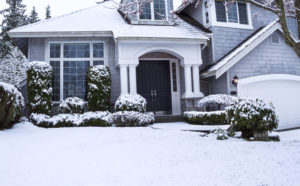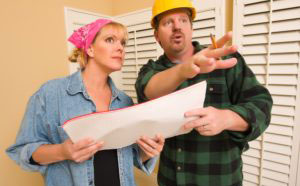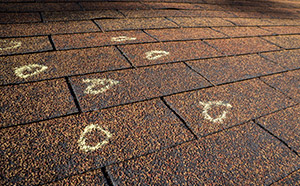
WHAT IS HAIL DAMAGE, AND HOW DOES IT AFFECT MY PENNSYLVANIA HOME?
January 19, 2020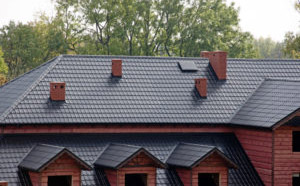
HOW TO CHOOSE A ROOF FOR YOUR PENNSYLVANIA HOME
January 21, 2020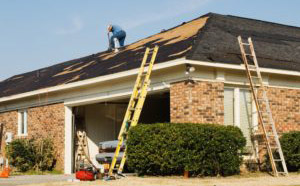
It is the proverbial question that every homeowner or business owner asks and wants an answer to when it comes to installing or replacing a new roof. How long should a roof last is the question, and the answer does not have to be confusing if it is explained in terms of materials used, the climate concerns of an area, ongoing maintenance, original installation standards and warranty and guarantee coverage.
Materials Used
The lifespan of a shingled roof or other type of roof really hinges on the materials used. The various materials that are commonly used on roofs and the average time that they last include the following:
- Asphalt Shingles that are 3-tab usually last from 15 to 18 years.
- Architectural Asphalt Singles can last anywhere from 24 to 30 years.
- Metal roofing material is enduring and can last from 30-45 years.
- Concrete tile has longevity as well and can last from 35-50 years.
Modified Bitumen or Built-Up Roof Membranes (BUR) refer to tar and gravel roofs that are made up of layers of bitumen and reinforcing materials that help create a finished membrane. This type of roof can last anywhere from 10-16 years.
EPDM (synthetic rubber membrane) is a durable oil and natural gas derivative of ethylene and propylene utilized in low-slope roof construction. It can last anywhere from 10-16 years.
Common and Other Types of Roof Coverings
Asphalt shingles are the most common of roof coverings and have been in existence for over 90 years, so they have endured the test of time. Most homes that are built today incorporate asphalt shingles for new and holder homes, and they have become the usual option of most homeowners. Depending on the asphalt shingle manufacturer, shingles can last anywhere from 20-40 years.
More organic type shingles consist of a composition of a considerable amount of asphalt (40%) as opposed to standard fiberglass shingles. The increased amount of asphalt saturation and the overall composition of the shingles gives them considerably more weight, stability, durability and wind and water resistance.
In comparison to organic shingles, glass fiber or fiberglass shingles are comprised of a fiber mat of reinforced glass that is configured in a shingle’s shape. The mat is coated with a asphalt filler that sticks to the mat, which enables waterproofing. A final coating of adhesive and ceramic granules covers and seals the mat. The granules actually protect the shingles form UV rays that can age and damage shingles.
There is a cost factor with organic shingles, so fiberglass or glass fiber shingles usually win out over their counterpart. They are less expensive to manufacture and are cost effective for both homeowners and roofing contractors.
Climate/Temperature Variations
The climate of a region can definitely affect the longevity of asphalt shingles and that factor also depends on temperature variations, proper installation and the location of the installation. With the average life of shingles being around 20 years, shingles that have been installed in cooler regions, like the North or Northeast, are going to last from 19-20 years; whereas, in the extreme climate environments of the West or Southwest, the lifespan of asphalt shingles is going to be about 14 years.
Temperature variations also influence a shingle’s life. When up and down temperature extremes occur, shingles are unable to expand and contract as they should, which usually results in cracks, splits and water damage.
Other Factors that Affect a Roof’s Longevity
Water damage can occur through the accumulation of water in cracks and slits on a roof, which can precipitate fungal and algae growth. These problems usually arise during colder parts of the year as the expansion of water in cracks and splits on roofs can bring on further shingle damage. Even more damage can arise in colder months because of inadequate attic ventilation. The appropriate amount of ventilation will further the life of shingles and other roof parts.
Here’s a list of conditions that affect roof longevity:
Color of roof – A dark roof absorbs more heat, which shortens the lifespan
Angle of roof slope – Higher pitch roofs tend to last longer.
Orientation of roof surface – A roof slope facing south will get more sunlight, and have a shorter life.
Multiple-layer roof – A roof installed over an existing roof will have a shorter life.
Quality of roof material – “Economy” roof materials have a shorter life.
Installation – Sloppy or improper installation shortens roof life.
Attic ventilation – An unventilated or poorly ventilated attic reduces roof lifespan.
Trees near roof – Tree branches rubbing on a roof or the acidity from the accumulation of leaf debris on a roof shortens its life.
Harsh climate – Severe weather, both harsh winters and hot summers, along with big temperature swings within a 24-hour period, also shorten lifespan because of the expansion and contraction of roof materials.
Additional Factors that Relate to Longevity
Something as simple as a roof’s color and the color of shingles can jeopardize a roof’s lifespan. Dark roofs absorb heat and lighter shingles can repel heat. A roof’s angle, slope and directional orientation can affect a roof’s life as well. Roofs that are higher pitched endure while those with a southern exposure will retain heat and have a shorter lifespan. More than one layer of roof over another will also compromise the life of a roof. More importantly, the quality of roofing material assuredly affects a roof’s life as does the proper installation of roofing materials. An improper or careless installation can shorten the life of a roof.
Ventilation and Barriers
Another factor that goes along with a roof’s longevity that was previously mentioned is an attic’s ventilation as well as actual physical barriers around the roof of a house, like trees and debris accumulation in gutters and openings in cracks of a roof. Skylights, chimneys, vents and any other structures on a roof can also play havoc with a roof’s function and hinder the life of a roof.
Maintenance
Maintenance and playing watchdog with a roof are two important elements that can prolong the life of a roof. Taking care of roofing issues, like curling and deteriorating shingles as soon as they are identified, and following through with roof maintenance on a regular basis are two factors that keep a roof in stable condition
Warranties
Warranties are another important aspect concerning a roof’s longevity. If there are material defects or manufacturing flaws, it is relevant that a warranty be carefully scrutinized for coverage as well as proper installation requirements and other essentials before making any commitments. Warranties through shingle manufacturers go from 20 to 40 years and longer.
Even with all the available information concerning the lifespan of a roof, there still may be questions and inquiries as to how to prolong the life of shingles or other parts of a roof. The professionals at Tri-County Exteriors are more than willing and able to answer any questions about extending the life of your roof. Just complete the online form and a roofing expert will get back to you with the answers you need to keep your roof in shape and add to its longevity.

